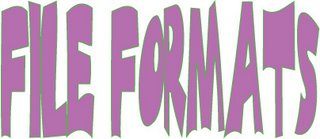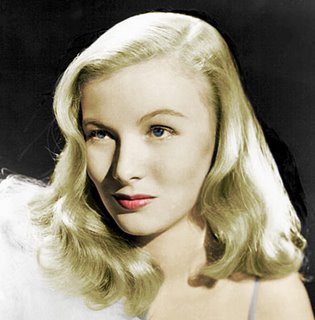 Task 4 requires a Description of the following File Formats:
Task 4 requires a Description of the following File Formats:- AI
- PDF
- EPS
- SVG
- PSD
- TIFF
- JPEG
- GIF
- PNG
An
AI File Format is an Adobe Illustrator File Format and is a Vector object format.
A
PDF File Format is a page description language (loosely based on Postscript, but not a programming language), which allows for files containing multiple pages and links. Works with
Adobe
Reader or Adobe eBook Reader, or third-party compatible software.
An
EPS File Format is a PostScript file that describes a small vector graphic, as opposed to a whole page or set of pages.
An
SVG File Format is an XML based vector graphics format, as defined by the World Wide Web Consortium for use in web browsers.
A
PSD File Format is a Default format for Adobe Photoshop
and has many extra features such as image layering. Also supported by some other image editing programs than Adobe Photoshop.
A
Tiff File Format is used extensively for traditional print graphics. Lossy and lossless compression available, but many programs only support a subset of available options.
Web pages require JPG or GIF or PNG image types, because that is all that browsers can show. On the web, JPG is the best choice smallest file for photo images, and GIF is most common for graphic images. The PNG was designed to replace the GIF format and the TIFF format being non patented and slightly better compression than GIF.
A
PNG File Format is a Portable Network Graphic that was developed to rival the GIF format as a patent-free, bitmap imaging file employing lossless data compression for the storage of raster images. Although the PNG format is not supported by all Browsers it is however supported by and used quite extensively by the World Wide Web. PNG's two-dimensional interlacing system is more complex to implement than GIF's line-wise interlacing and also costs a little more in file size but yields an initial image eight times faster than GIF.
PNG'S capabilities are as follows:
· palette-based support (1, 2, 4, 8-bit), like GIF
· grayscale support (1, 2, 4, 8, 16-bit)
· truecolor support (24, 48-bit), like TIFF or (sort of) JPEG
· binary transparency, like GIF (except including grayscale and RGB modes, not just
palette-based)
· alpha transparency (256 or 65536 levels of partial transparency), like TIFF
· alpha-palette transparency (that is, palette has RGBA entries, not just RGB), unlike
almost anything else on the planet except Targa/TGA
· direct support for gamma correction and color correction
· lossless, unpatented compression
· 2D interlacing, somewhat like progressive JPEG
· no animation (but a closely related format called MNG)
http://www.libpng.org/pub/mng/
http://www.wikipedia.com
GIF: A GIF is a Graphics interchange Format that employs the lossless data compression technique and transparency just like the PNG, but it only supports 256 colours which can make the images coarse and grain-like. GIF'S are raster graphic format developed to exchange image files across multiple platforms. They are preferred file format for web graphics because they have small file sizes. Another trick that is used to limit the file size is dithering. This technique is used to create the illusion of greater colour depth by blending a smaller number of coloured "dots" together. When fewer colours are able to be displayed than are present in the original image, then patterns of adjacent pixels are used to simulate the appearance of the underrepresented colours. Dithering is not really a feature of GIF, it is simply a technique that is often used within GIF images. Dithering adds noise to the image and it reduces sharpness. So they more effectively used for scanned images such as illustrations rather than color photos. GIF is a file format that is not really suitable for prepress, and it s main application is for web design or to exchange images via e-mail or by newsgroups.
Application:
· Drawings (technical or line-drawings)
· Diagrams
· Sketches
· Logos
· Icons
· Thumbnails
Restricted application:
· Photos, photo-realistic graphics
· Files, which require a strong compression and/or reduction of the data volume
· Generally data with a large number of colours
· Pictures with homogeneous colour changes
· Open source or freeware projects (licenses are required; it is not well-known, when patents expire in ALL countries)
http://www.libpng.org/pub/mng/
http://www.wikipedia.com
JPEG: Pronounced jay-peg and is short for Joint Photographic Experts Group. JPEG is a lossy compression technique designed to compress color and gray scale continuous-tone images. Although it can reduce files sizes to about 5% of their normal size, some detail is lost in the compression. The information that is discarded in the compression is information that the human eye cannot detect. JPEG images support 16 million colors and are best suited for photographs and complex graphics. The user typically has to compromise on either the quality of the image or the size of the file. The JPEG does not work well on line drawings, lettering or simple graphics because there is not a lot of the image that can be thrown out in the lossy process, so the image loses clarity and sharpness.
The JPEG probably won't displace GIF entirely; for some types of
images, GIF is superior in image quality, file size, or both. JPEG
files are superior to GIF for storing full-color or gray-scale images
of "realistic" scenes; that means scanned photographs,
continuous-tone artwork, and similar material. Any smooth variation
in color, such as occurs in highlighted or shaded areas, will keep
better integrity and in less space by JPEG than by GIF.
GIF does significantly better on images with only a few distinct
colors, such as line drawings and simple cartoons. Not only is
GIF lossless for such images, but it often compresses them more
than JPEG can. The more complex and subtly rendered the image,
the more likely that JPEG will do well on it. The same goes for semi-
realistic artwork (fantasy drawings and such). But icons that use only
a few colors are handled better by GIF.
http://webopedia.comhttp://www.scantips.com/COOL TIP: To locate the definitions and characteristics of the above file formats I found the quickest and easiest way was to go straight to a search engine like Google, Web Crawler or NineMSN. Type your question into the search browser, for example “What is a GIF file format?” and voila!







 For this task I will describe the following Colour Models:
For this task I will describe the following Colour Models:



